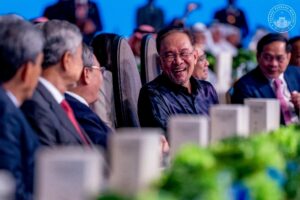Four Reasons Why Proposals to Source Rare Earth Minerals from Myanmar Will Not Succeed
Recent proposals to source rare earths from Myanmar are untenable, reflecting a misalignment between geopolitical ambition and ground-level constraints

By Amara Thiha
August 1, 2025
Proposals to source rare earths from Myanmar reflect a reflect a fundamental misreading of on-the-ground conditions. Logistics challenges and processing constraints, the deep dependence of the KIA, which controls the mining sites, on China, international and U.S. legal and financial compliance barriers, and civil society opposition and environmental risks render the proposals untenable. Attempts by the United States to engage with Myanmar’s rare earths could also risk strategic backlash from China.
On 28 July, reports emerged of two proposal pitches submitted to the U.S. Vice President’s Office concerning access to rare earth reserves in Myanmar. One proposal focuses on engagement with the military-led State Administration Council (SAC), while the other suggests direct negotiation with the Kachin Independence Army (KIA) to leverage mineral access for political gain. Although distinct in approach, both proposals reflect a fundamental misreading of on-the-ground conditions. Even recent growth in rare earth mining in Wa-controlled areas of Shan State does not alter this reality, as these sites remain isolated, reliant on informal trade with China, and inaccessible to any legal export framework. Neither offers a viable basis for securing rare earth supply chains from Myanmar. The following four reasons explain why these strategies are untenable.
Logistics and Processing Constraints
Myanmar lacks the technical and logistical foundations to support rare earth exports at a commercially viable scale for partners other than Chinese companies. Extraction in Kachin State, particularly in areas under KIA control, produces raw or semi-processed material, but there is no domestic capability for high-purity separation. Processing is conducted almost entirely in China, where Chinese companies routinely ship materials directly from the mining sites. This entrenched dependency ensures Myanmar remains a supplier of low-value inputs, not a source of refined minerals suitable for high-tech applications.
Exporting raw material to markets beyond China faces even greater challenges. No infrastructure, customs regime, or transport corridors exist to support sustained shipments to India, Thailand, or further afield. Although an Indian firm reportedly collected samples from Kachin earlier this year, border areas such as Nagaland and Manipur are isolated, conflict-affected, and disconnected from India’s refining centers. Any alternative route to the United States or other markets would require reliable transportation across multiple territories controlled by different armed actors, creating both physical security risks and regulatory exposure.
These layered constraints, including limited processing capacity, fragmented territorial control, and the absence of legally recognized export pathways, make independent rare earth sourcing from Myanmar commercially unworkable.
The KIA’s Structural Dependence on China
Control over mining territory does not translate into commercial autonomy. The KIA has preserved longstanding joint ventures with Chinese firms, many of which operated under prior arrangements with junta-allied Border Guard Forces. These partnerships remain critical to the KIA’s ability to export material and sustain local operations.
China is the KIA’s primary gateway not only for mineral trade, but also for essential commodity imports, including fuel, rice, and construction supplies. Alternative corridors through India or Thailand are either inaccessible or politically unviable. The KIA’s command centers lie along China’s Yunnan Province border, and its continued access to trade flows depends on political coordination with Chinese authorities.
Shared ethnic ties further reinforce this relationship. The Jinghpaw, Kachin’s majority ethnic group, are also a recognized minority in Yunnan Province. In 2024, KIA representatives were invited to attend sessions of the Chinese People’s Political Consultative Conference, reflecting Beijing’s openness to informal cross-border engagement rooted in ethnic affiliation. When the KIA seized rare earth sites in early 2024, China briefly closed the border before reopening it following direct coordination, demonstrating the depth of Chinese leverage.
In this context, any strategy that seeks to bypass Chinese actors misunderstands the structural nature of the KIA–China relationship. China controls the flow of goods, access to processing, and the political space in which the KIA operates. Proposals that ignore this reality are not only unrealistic but strategically incoherent. Any serious KIA effort to explore alternative markets would almost certainly trigger direct Chinese pressure, ranging from temporary border closures to restrictions on the movement of commodities. Such pressure would likely exceed that which China imposed on another ethnic armed group, the Myanmar National Democratic Alliance Army (MNDAA), prior to its ceasefire earlier this year, as Kachin’s cross-border trade and daily operations are more deeply dependent on Chinese coordination.
International and U.S. Compliance Barriers
Myanmar’s rare earth trade is effectively inaccessible to U.S. and European companies due to overlapping international due diligence standards and U.S. legal restrictions. The Organisation for Economic Co-operation and Development (OECD) Due Diligence Guidance explicitly prohibits sourcing from entities that benefit non-state armed groups. Under Annex II of this framework, the Kachin Independence Army (KIA) qualifies as such a group. Any royalties, security fees, or licensing payments that flow to KIA structures would trigger mandatory disengagement obligations under OECD protocols.
U.S. and European importers are expected to demonstrate full traceability, conduct independent audits, and publish due diligence findings. These are not voluntary standards. In the European Union, they are embedded in law and backed by regulatory enforcement. In the United States, they form the compliance baseline for federal regulators, investors, and institutional purchasers. Failure to meet these standards carries tangible consequences: firms sourcing from KIA-controlled areas could face regulatory investigation, investor divestment, and exclusion from global supply chains. The reputational costs are immediate, and the legal risks are escalating.
While the Kachin Independence Army (KIA) is not formally designated under U.S. sanctions, it operates as a non-state armed group outside recognized state authority. Transactions that confer material benefit to the KIA might carry a risk of liability under 18 U.S.C. § 2339A, which prohibits providing material support to armed groups engaged in conflict. Engagement with the Myanmar military regime offers no alternative. The State Administration Council (SAC), which controls the country’s formal state institutions, is under U.S. sanctions imposed through Executive Order 14014. Any commercial benefit extended to SAC-linked ministries, military units, or state-owned enterprises is broadly prohibited. This includes export permits, licensing fees, tax payments, and any form of joint venture that confers material benefit to the regime.
Financial institutions and insurers will not support transactions that involve either KIA-held territories or SAC-controlled frameworks. Trade finance, dollar clearing, and international insurance coverage are effectively blocked, leaving companies unable to move funds, secure transport, or clear goods through customs without triggering compliance alerts. U.S. Customs and Border Protection can detain or seize shipments if documentation indicates indirect links to sanctioned parties or armed groups.
When combined, international due diligence rules, U.S. sanctions, and financial system barriers create a structural block on any rare earth sourcing from Myanmar. The risks are legal, financial, and reputational, leaving no viable route for compliant trade under current conditions.
Civil Society Opposition and Environmental Risk
The environmental impact of rare earth mining in Kachin has drawn sustained condemnation from civil society groups across Southeast Asia. Independent investigations and satellite imagery confirm widespread deforestation, water contamination, and displacement in mining zones. These effects are not hypothetical. They are observable and ongoing.
Local and transnational advocacy networks have already launched campaigns targeting companies involved in conflict-linked resource extraction. While some external observers may frame the Kachin Independence Army (KIA) as a pro-Western or Christian bulwark against Chinese influence, environmental activism is rarely shaped by political alignment. Campaigns are driven by the documented impacts of mining, including pollution, deforestation, and displacement, rather than by those who sponsor or benefit from the extraction. Any U.S.-backed venture into KIA-controlled mining would be met with intensified opposition. Such campaigns have proven effective in shaping regulatory outcomes and investor sentiment, particularly in sectors associated with human rights or environmental violations.
Beyond reputational costs, there is growing risk of future litigation or regulatory restriction. Buyers could face lawsuits under national supply chain laws or be blacklisted by ethical investment funds. Any attempt to engage with Kachin’s rare earth trade must account for the likelihood of enduring and well-organized civil society mobilization.
Conclusion
There is no viable legal or financial route for U.S. companies to source rare earths from Myanmar, whether through the KIA, the junta, or any intermediary. The liability exposure is structural, not circumstantial, and renders these proposals unworkable under current law.
Equally important, the mere appearance of U.S. interest risks strategic backlash. Beijing has long overestimated American influence in Myanmar, reinforced by the BURMA Act and sanctions rhetoric. Any visible U.S. attempt to engage with Myanmar’s rare earths could prompt China to tighten its control over Kachin’s mining corridors and accelerate restrictions on U.S. rare earth access. Instead of expanding supply, speculative engagement would likely reduce U.S. options and harden Chinese resolve.
Proposals to source rare earths from Myanmar reflect a misalignment between geopolitical ambition and ground-level constraints. Any serious policy approach must begin with the recognition that neither physical control of deposits nor political engagement alone constitutes access. Without enforceable legal frameworks, stable logistics, and compliant trade structures, mineral abundance becomes irrelevant. Strategic planning should focus not on bypassing structural realities, but on securing supply through jurisdictions where governance, transparency, and enforceability align. Myanmar does not meet that threshold.




